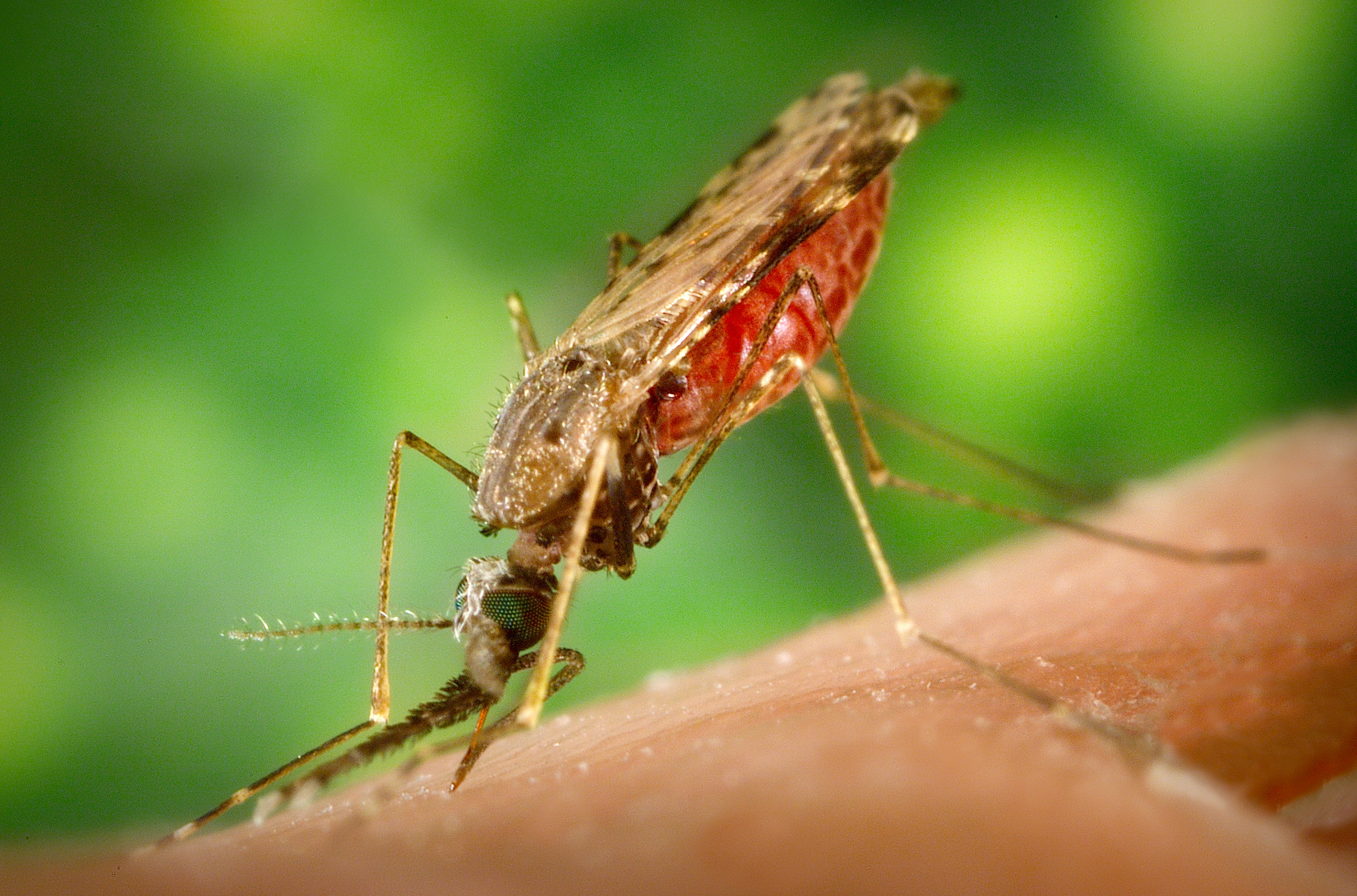Human Health Effects
Climate Change and Health Effects
In the United States disease occurrence is not so strongly tied to the local climate or environmental factors. True, more Americans get the flu or colds during the winter months, but in other parts of the world, climate plays a much more significant role.
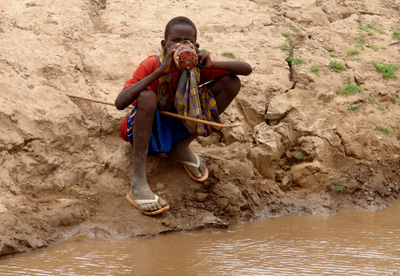 Some regions already have thousands of malnourished people. Droughts and floods in these areas cause even further hardship and suffering. Without the appropriate infrastructure any type of environmental change makes adaptive measures more difficult. Severe weather events such as hurricanes can destroy entire cities in some parts of the world, and the people find it difficult, if not impossible, to recover from such events.
Some regions already have thousands of malnourished people. Droughts and floods in these areas cause even further hardship and suffering. Without the appropriate infrastructure any type of environmental change makes adaptive measures more difficult. Severe weather events such as hurricanes can destroy entire cities in some parts of the world, and the people find it difficult, if not impossible, to recover from such events.
Human health suffers under these environmental conditions. Water supplies are contaminated, sewage in city streets carry disease, and a lack of medical care can result in thousands of deaths.
Read below about some of the environmental conditions that can affect human health. Use the Related Links to research and report on other environmental situations that may negatively impact health. Also see Climate Change and Factors Related to Human Health.
Heat-related Deaths
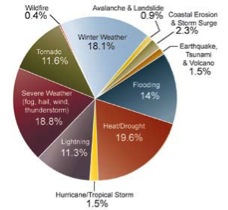 Increases in temperature will directly affect human health. More extreme heat waves during the summer will increase the incidence of heat-related deaths. For instance, record-setting heat waves in 2010 resulted in mortalities, especially among the elderly, people with heart or respiratory problems, and the poor. In the United States, Chicago, a city which has been the site for heat-related tragedies in the past, is predicted to experience 25 percent more frequent heat waves. Los Angeles is expected to have 4-8 times as many heat wave days by the end of the century (IPCC, 2007).
Increases in temperature will directly affect human health. More extreme heat waves during the summer will increase the incidence of heat-related deaths. For instance, record-setting heat waves in 2010 resulted in mortalities, especially among the elderly, people with heart or respiratory problems, and the poor. In the United States, Chicago, a city which has been the site for heat-related tragedies in the past, is predicted to experience 25 percent more frequent heat waves. Los Angeles is expected to have 4-8 times as many heat wave days by the end of the century (IPCC, 2007).
Climate-sensitive Diseases
Climate change may affect the risk of infectious diseases, especially those diseases that occur primarily in warmer areas and that are spread by vectors, an insect or other organism that transmits a pathogenic fungus, virus, or bacterium.
Source: http://en.wikipedia.org/wiki/Malaria
(For more information on climate-sensitive disease, see Human Disease and Mortality in this module.)
Note that disease occurrence and mortality rates will also be affected by the health care system of the country in which the disease occurs. If improved health care, hygiene, and sanitation procedures are provided, then some infectious diseases may not increase.
Air Quality
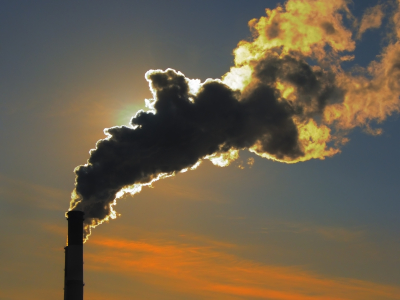 Climate change is expected to significantly contribute to a decrease in air quality. Respiratory disorders may worsen because of warming-induced increases in smog, ground-level ozone, and particulate air pollution.
Climate change is expected to significantly contribute to a decrease in air quality. Respiratory disorders may worsen because of warming-induced increases in smog, ground-level ozone, and particulate air pollution.
Ground-level ozone can damage lung tissue. People with asthma and other chronic lung diseases are particularly susceptible. Ground-level ozone is increased when sunlight and higher temperatures are combined with other pollutants. Ozone causes lung damage and respiratory disorders and is also associated with cardiovascular diseases and cardiac dysrhythmias.
Particulate pollution may also increase because of climate change. Particulate pollution consists of a mixture of small particles and liquid droplets. The particles are small enough to travel deeply into the lungs where they cause a variety of health problems.
With longer and warmer seasons the amount of pollen in the air will increase. Incidences of allergy-related illness will rise.
Malnutrition
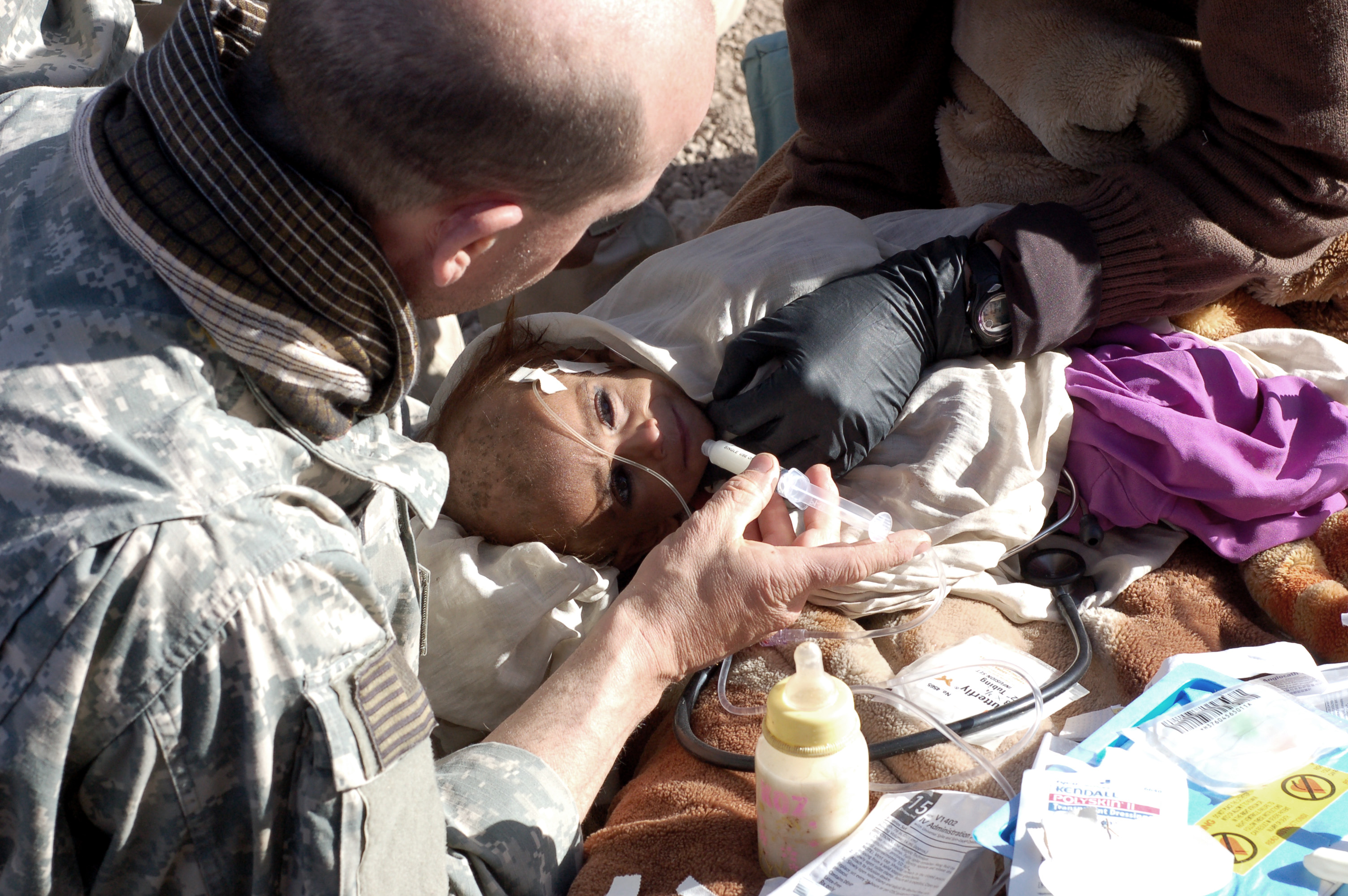 As extreme weather events occur more frequently, agricultural yields and crop production will be increasingly affected. Hurricanes in Earth’s poorest areas have destroyed crops critical to human survival. Increased floods, droughts, heat waves, and hail storms have destroyed crops in the U.S. Midwest and caused prices to rise.
As extreme weather events occur more frequently, agricultural yields and crop production will be increasingly affected. Hurricanes in Earth’s poorest areas have destroyed crops critical to human survival. Increased floods, droughts, heat waves, and hail storms have destroyed crops in the U.S. Midwest and caused prices to rise.
However, increased temperatures may lengthen the growing season. A longer growing season will allow additional crops to be harvested. The balance between all factors that affect agricultural yields will be critical to producing food. It is thought that developing countries will be more adversely affected by climate change-induced malnutrition.
Increased concentrations of ground-level carbon dioxide may increase CO2 concentrations in seawater. A more acidic water environment would adversely affect the world’s tropical ecosystems and would have dramatic consequences for fisheries and food supplies in parts of the world that rely on oceans for food.
Source: http://en.wikipedia.org/wiki/Malnutrition
Extreme Weather Events
Studies continue to show that global warming mechanisms will increase the frequency of extreme weather events. Data cannot show that a particular hurricane, tornado, or flood was caused by increased global temperatures, but rather studies of the mechanisms involved in warming trends and greenhouse gases indicate a link.
More Severe Hurricanes
 Sea surface temperatures and deepwater temperatures have a great impact on the intensity of a hurricane. Ocean waters have to be warm enough and the warmth has to extend down to a depth of at least 200 feet in order to have the energy to fuel hurricane formation.
Sea surface temperatures and deepwater temperatures have a great impact on the intensity of a hurricane. Ocean waters have to be warm enough and the warmth has to extend down to a depth of at least 200 feet in order to have the energy to fuel hurricane formation.
Increased temperatures will fuel more hurricanes and more severe hurricanes. Also, hurricane season may be extended because of increased temperatures.
Source: http://en.wikipedia.org/wiki/Hurricane_Katrina_effects_by_region
Increased Wildfires
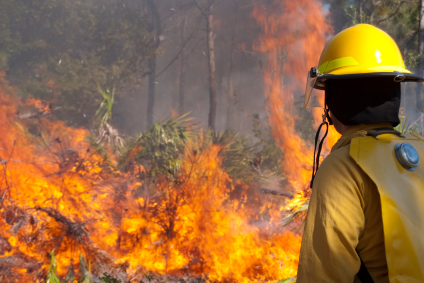 Hotter, dryer conditions in some regions of the world may set up conditions that are ripe for wildfires. Increased global temperatures may extend warm seasons and moderate winter weather. This not only produces longer fire seasons, but causes outbreaks of tree-eating beetles. Insects such as these add large amounts of dead, dry wood that fuels fires.
Hotter, dryer conditions in some regions of the world may set up conditions that are ripe for wildfires. Increased global temperatures may extend warm seasons and moderate winter weather. This not only produces longer fire seasons, but causes outbreaks of tree-eating beetles. Insects such as these add large amounts of dead, dry wood that fuels fires.
Milder winters have also allowed the beetles to invade and survive in areas where they could not have previously lived. More northern regions have been hard hit by wildfires in recent years. Alaska, Northern Canada, Scandinavia, and Siberia are examples of areas that are not susceptible to wildfires in summer months.
Steven W. Running reported in Science magazine that "longer, warmer summers have resulted in a fourfold increase of major U. S. wildfires and a six-fold increase in the area of forest burned, compared to the period from 1970 to 1986."
These wildfires put lives at risk. The Cedar wildfire in California caused 15 deaths. The East Amarillo Complex fire in Texas caused 11 deaths, and more than 200 people were killed in the Australian wildfires in 2009.
Wildfires also risk public health through air quality. Smoke, noxious gases and soot particles can be transported thousands of miles. Respiratory problems can result.
Source: http://en.wikipedia.org/wiki/Wildfire_suppression
Increased Droughts and Floods
How can there be both increased droughts and floods? It 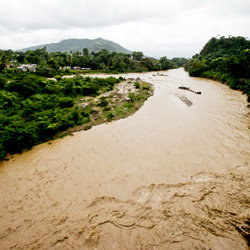 depends on the region in question.
depends on the region in question.
Higher temperatures makes evaporation of water from soils occur more quickly. After the initial water evaporates, dry soils can have an effect on the amount of precipitation that occurs; with less water to evaporate from dry soils, less water goes into the atmosphere and fewer rain clouds form.
However, when water vapor does build up in the atmosphere and moves into an area with dry soil, the soil cannot handle the downpour. Most of the water runs off into streams or rivers. With continued rain, flooding often results in areas that had be in drought conditions.
Climate change involves many factors that can affect human health. Factors affecting Earth’s atmosphere, waters, and soils are interrelated with the organisms that live on Earth. The interconnections must be considered when studying effects of climate change.



